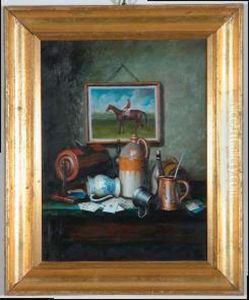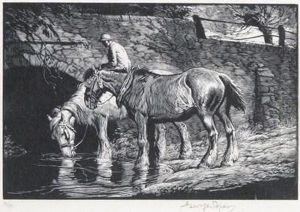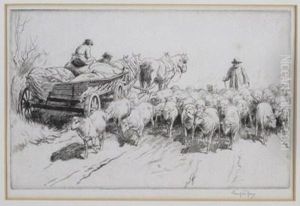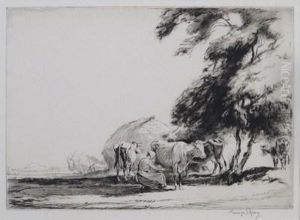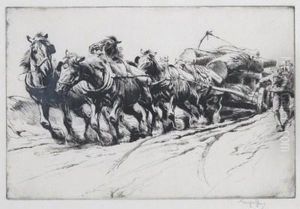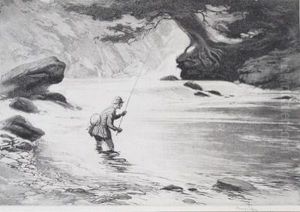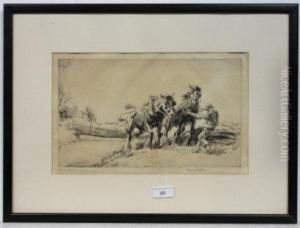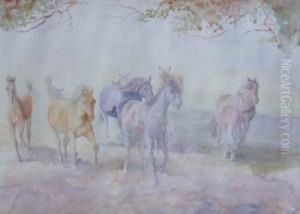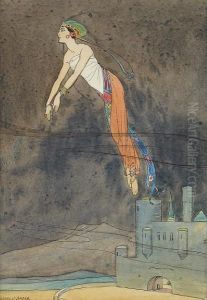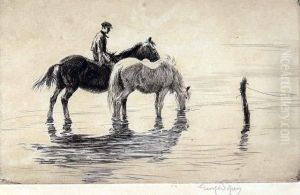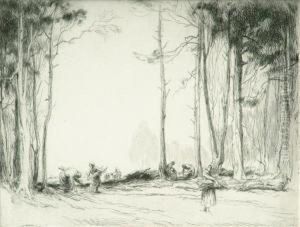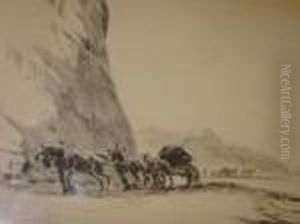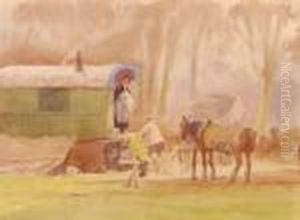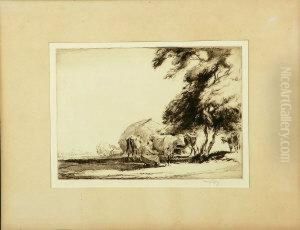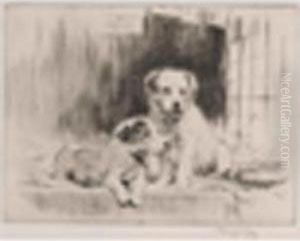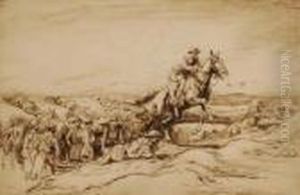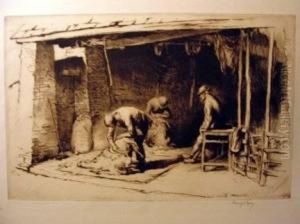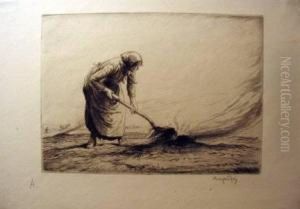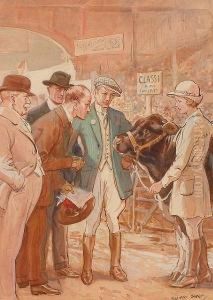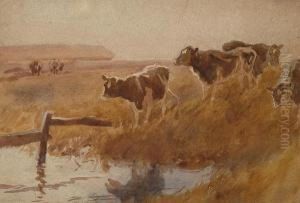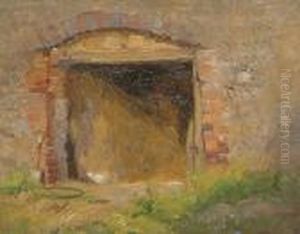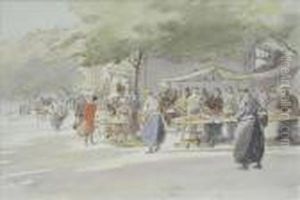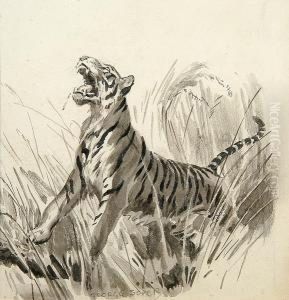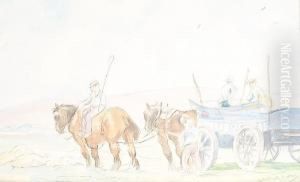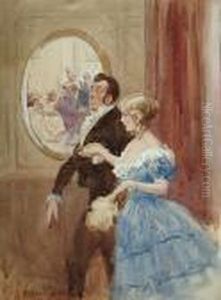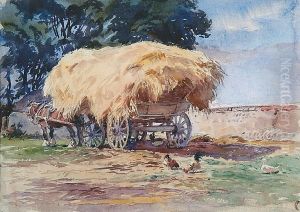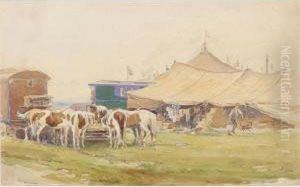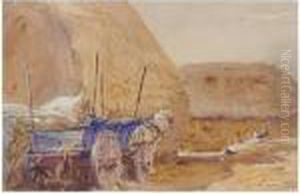George Soper Paintings
George Soper was an English printmaker, illustrator, and painter, known for his idyllic rural scenes and depictions of agricultural life. Born on July 20, 1870, in South Hackney, London, he grew up in a period that saw the transition from Victorian to Edwardian England, a time characterized by significant social change and the influence of the Arts and Crafts movement.
Soper's artistic talents became evident early in his life, and he was formally trained at the National Art Training School, which is now the Royal College of Art. His education was enhanced by his studies under the tutelage of the printmaker Sir Frank Short, which had a profound influence on Soper's career. He developed a particular affinity for etching and wood engraving, mediums through which he would express his passion for the English countryside.
Throughout his career, George Soper's work was widely exhibited, including at the Royal Academy and the Royal Society of Painter-Etchers and Engravers, of which he became a member. His illustrations graced the pages of numerous books, including children's literature, where his depictions of animals and pastoral life were particularly cherished.
Soper's etchings and engravings were highly regarded for their technical proficiency and their ability to capture the bucolic charm of the landscape and rural life. He often portrayed scenes of farming, horses, and the working life of the countryside with a romantic yet realistic touch. His work reflects a bygone era, celebrating the simplicity and beauty of agrarian life.
Despite the onslaught of both World Wars, Soper continued to produce work that offered a sense of continuity and tradition. His artistic output remained consistent until his death on September 18, 1942. Today, George Soper's work is remembered for its contribution to British printmaking and illustration, and his prints are sought after by collectors who value the pastoral beauty and nostalgia of his scenes.
